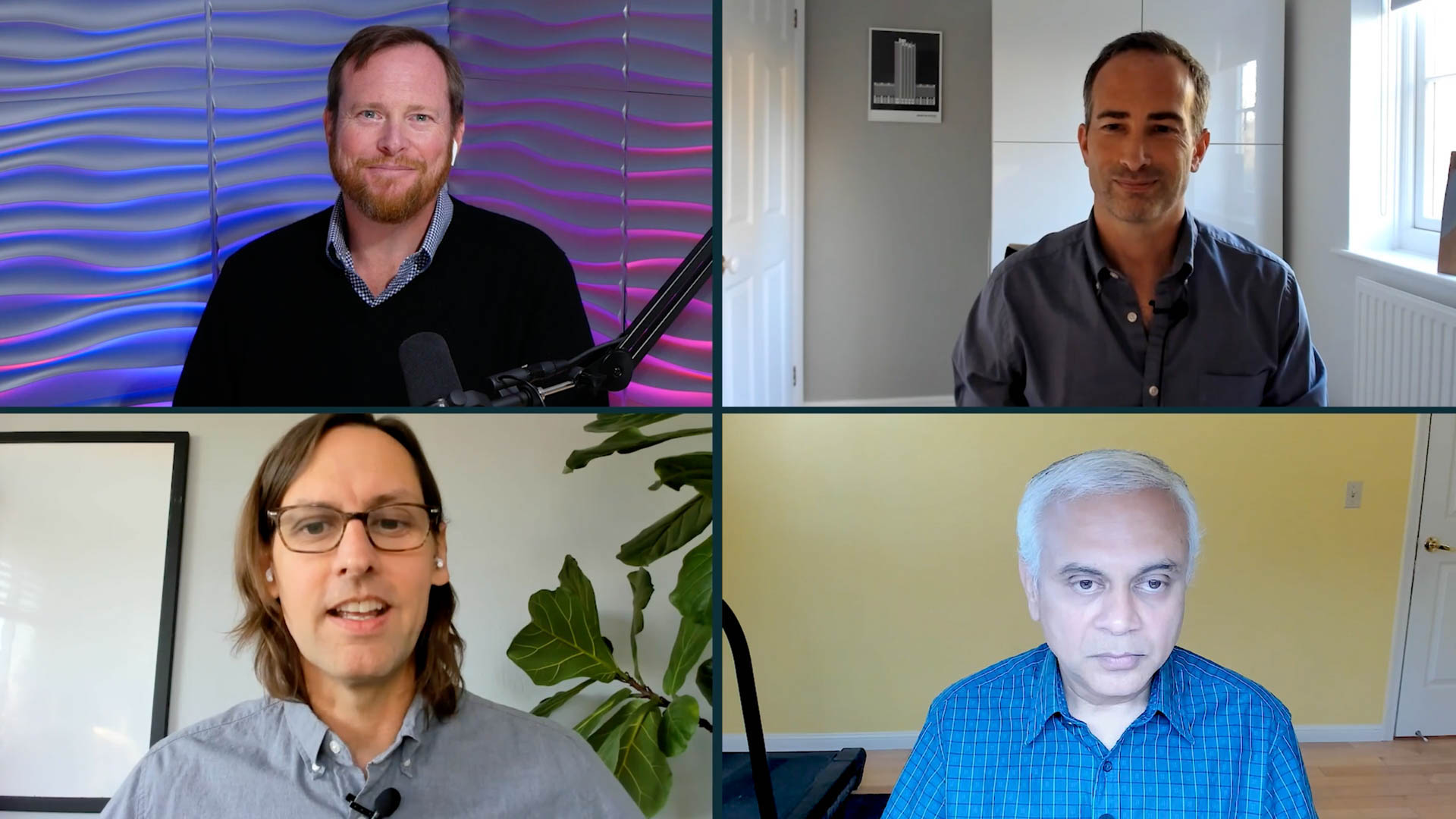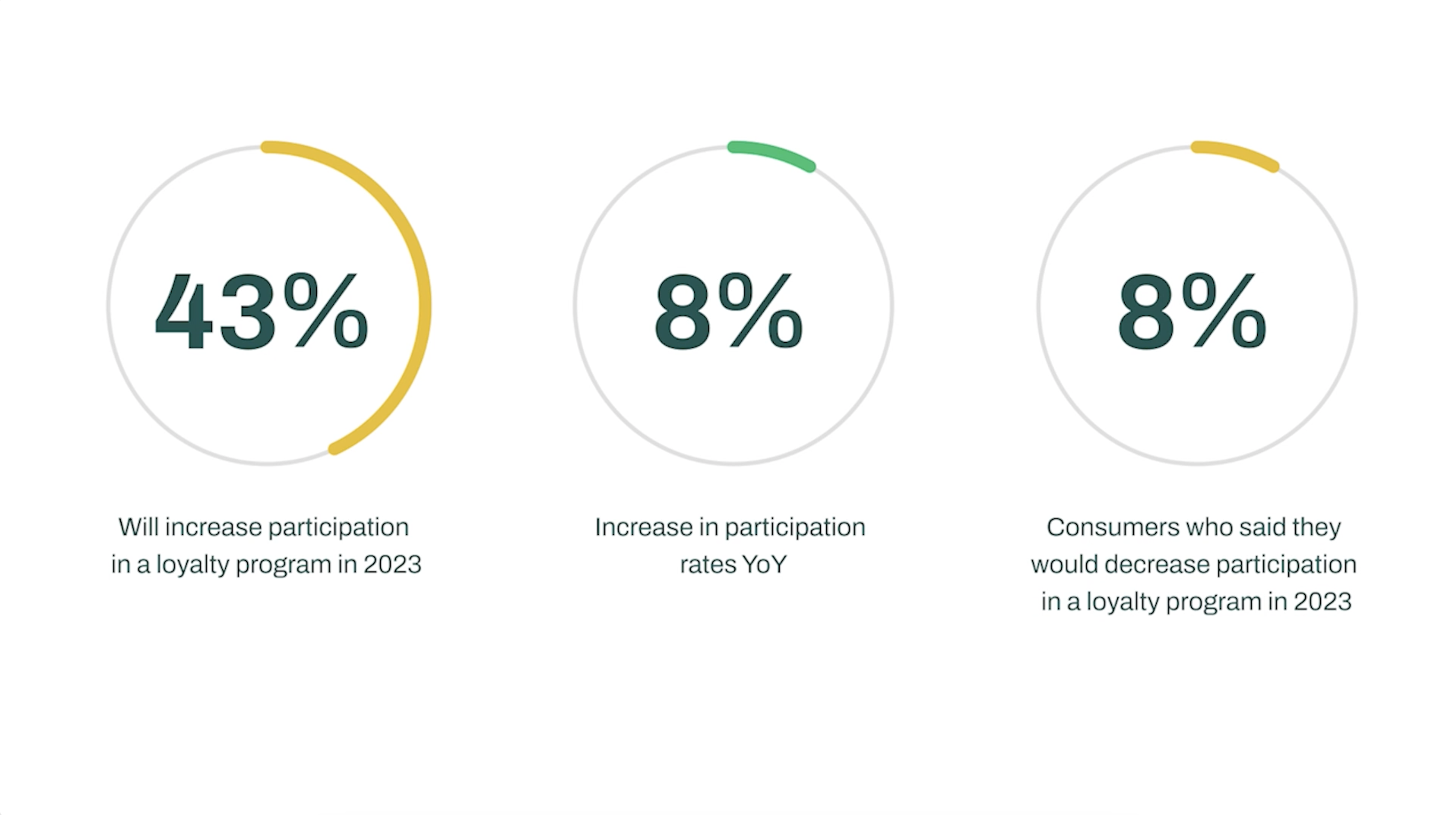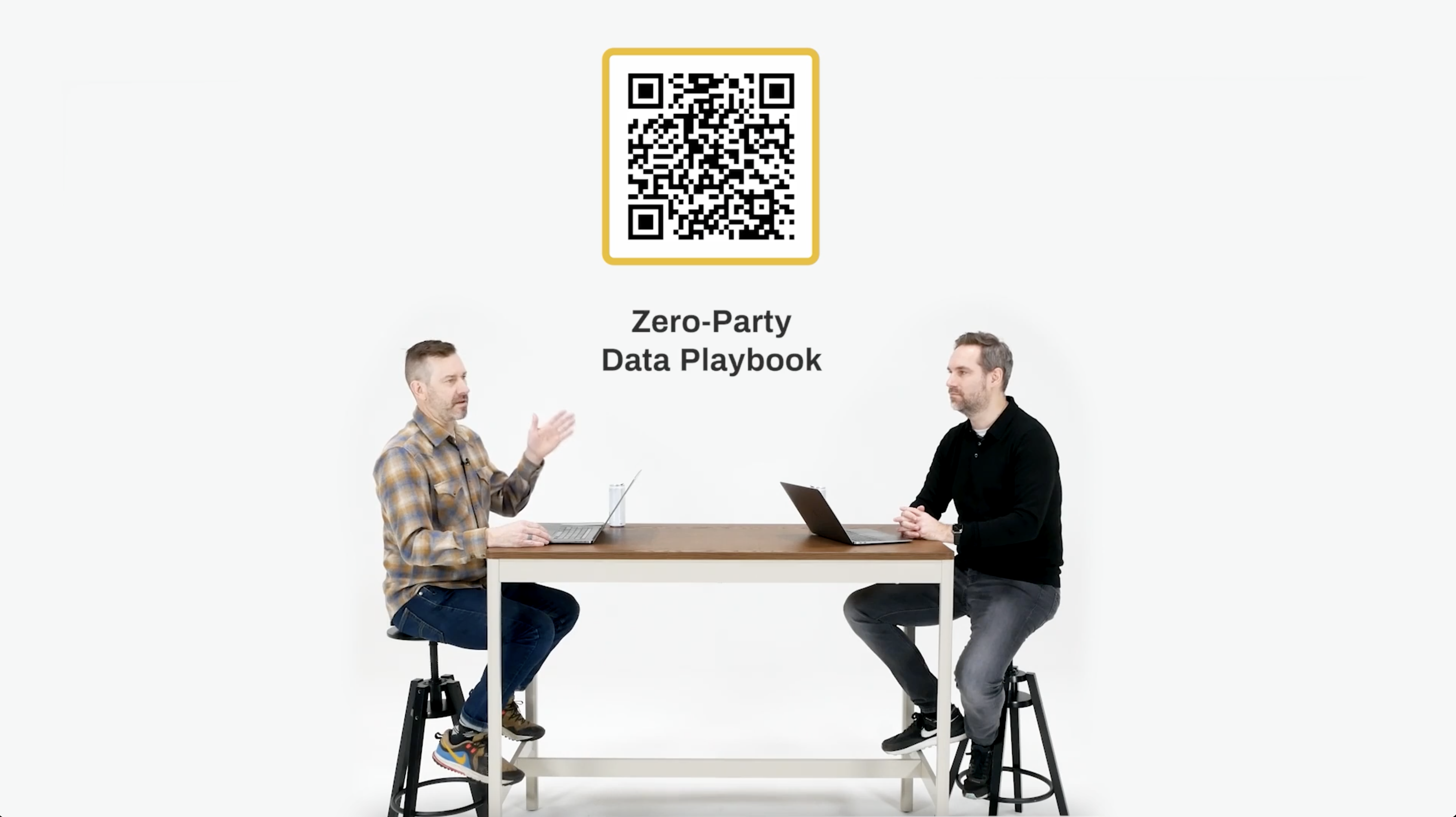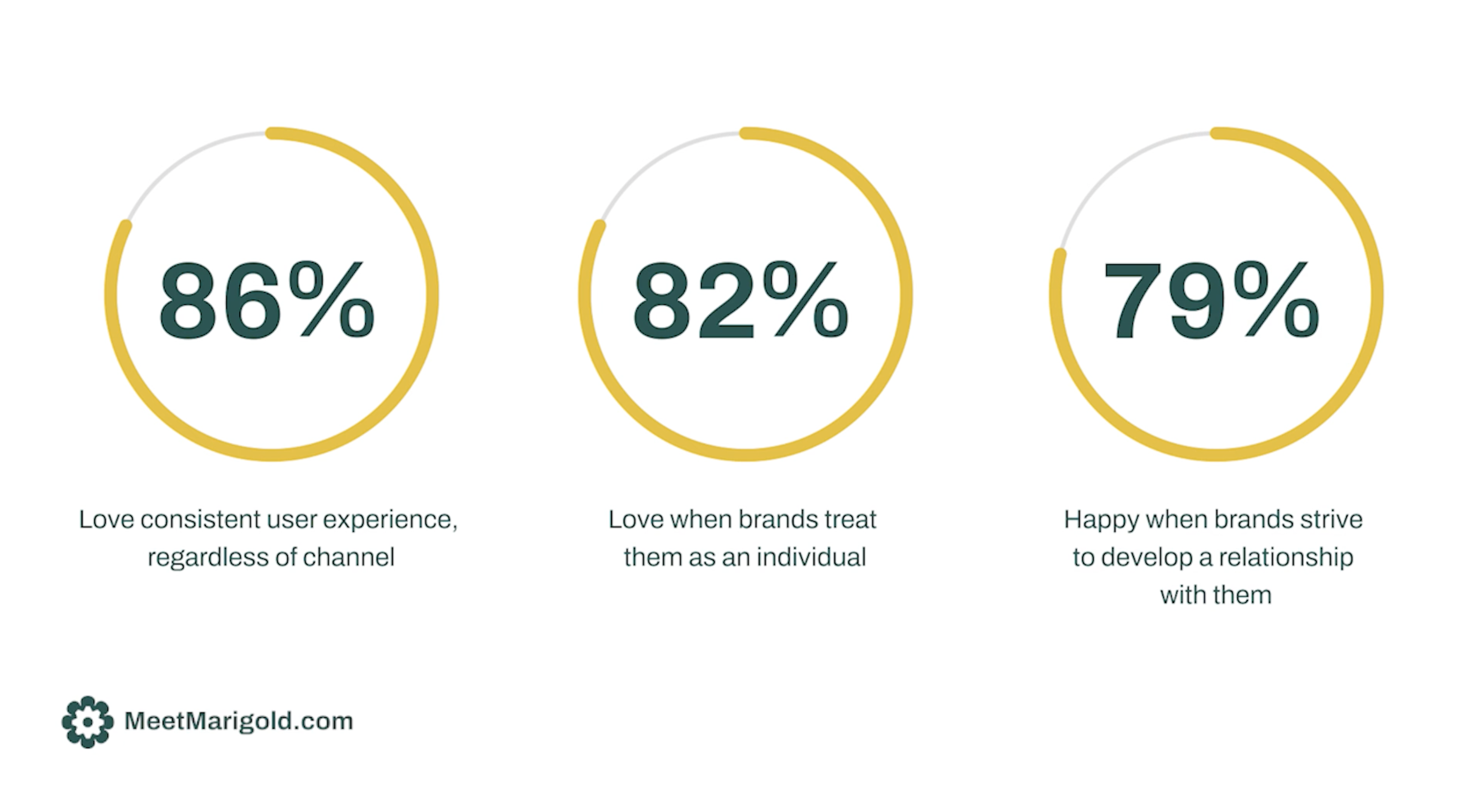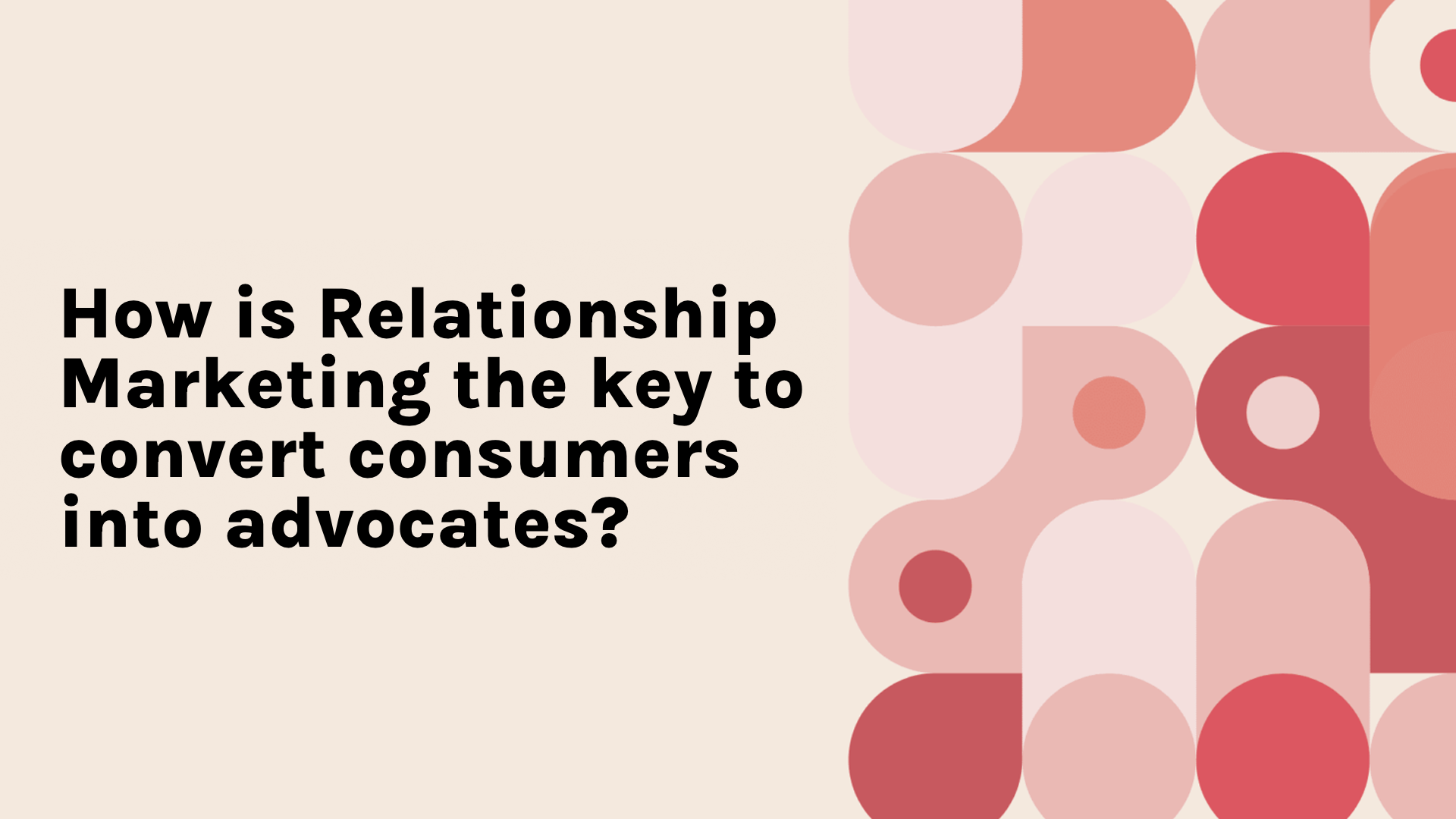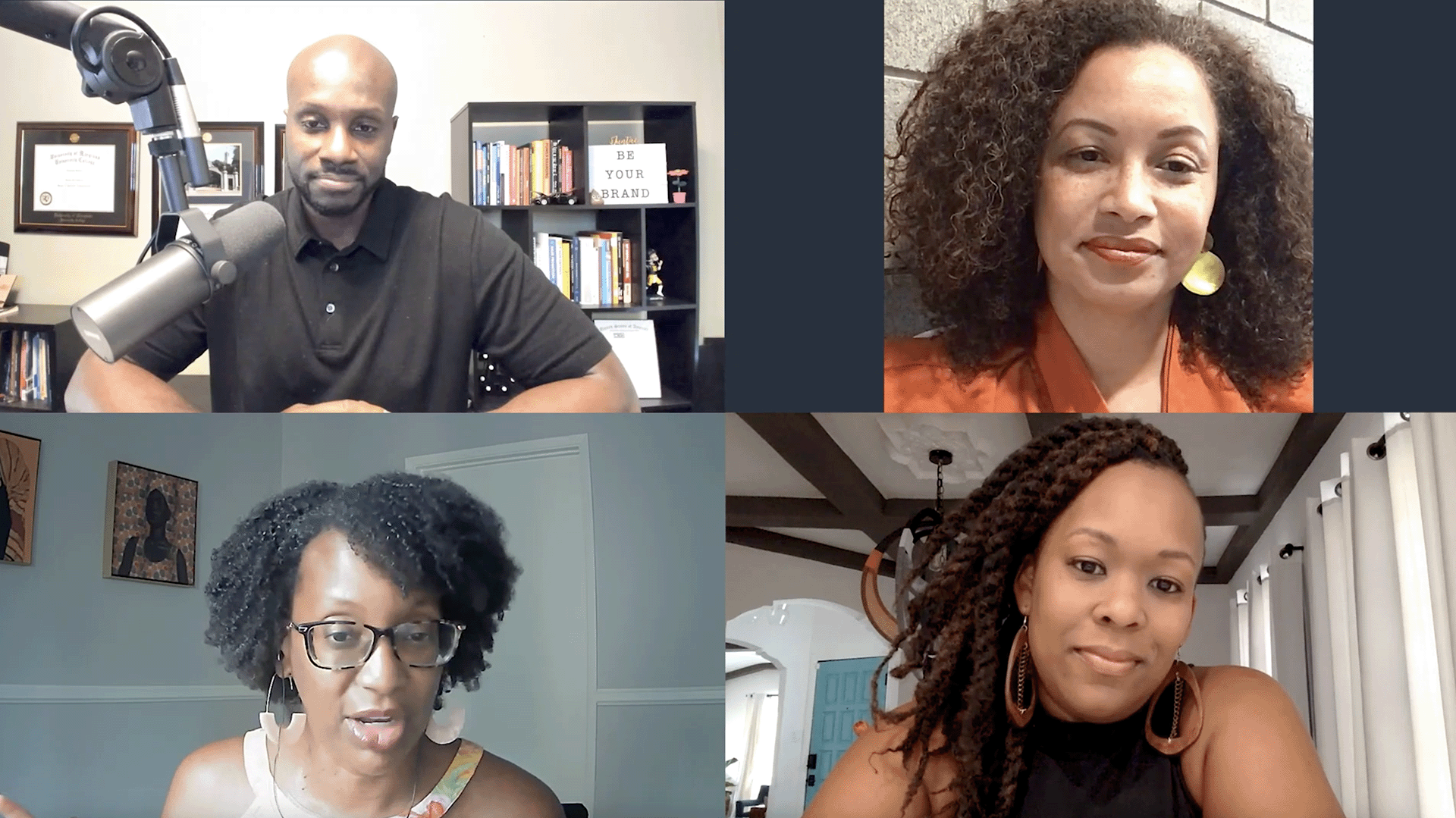Innovation in Action at Cheetah Digital, A Panel Discussion
- 0.5
- 1
- 1.25
- 1.5
- 1.75
- 2
Nick Einstein: Hi, my name is Nick Einstein. Thanks for joining us today. In the previous session, Manoj Goyal, our chief product officer, highlighted four key themes that our product teams that Cheetah Digital are laser- focused on addressing head- on, creating a value exchange with consumers, moving from static to real- time engagement, unifying loyalty and marketing engagement, and knowing all that's knowable about customers. Now, I'm joined by three leaders from across the Cheetah Digital product organization to highlight some of the key innovations we're bringing to market, and dig a little bit deeper into exactly how we're addressing these core challenges today and moving forward. Iain Short is joining us today from the UK. Iain is VP of product management and responsible for acquisition and engagement solutions. Welcome, Iain.
Iain Short: Thanks, Nick.
Nick Einstein: Wes Barkwill, principal product manager, responsible for retention and loyalty solutions, is coming to us today from the Bay Area. Thanks for joining, Wes.
Wes Barkwill: Hi, Nick.
Nick Einstein: And also in the San Francisco Bay Area is Manoj Das, VP product management, who handles our platform. Welcome, Manoj.
Manoj Das: Hey, Nick. Very excited to be here. Thanks for this opportunity.
Nick Einstein: Excellent. And thank you to everyone joining us today. This is going to be a meaty conversation. Let's kick it off by talking a little bit about creating a value exchange with consumers. At Cheetah, we believe that it's absolutely essential for marketers to establish that value from moment one, and we've developed some really innovative technology to help you make that happen. Iain, let's get into it.
Iain Short: Well, let's start at the beginning. Acquiring new customers and getting to know existing ones can be significantly more effective when you can clearly articulate the value that you have to offer. And this can be in the form of some kind of immediate value, like a chance to win a prize or helping someone select the right product for their current needs. But it can also be in the form of longer- term value where we ask users about specific interests and needs in order to better serve them and to build a better, stronger relationship with them, serving them more personalized news, tailored advice, access to relevant offers and exclusive events and so on. And there are many opportunities you can imagine to offer a value exchange and get some of these insights about your users, whether that's for known users or for unknown users, and we see this pretty much in our customer base. There's many customers who build a whole range of different experiences, targeted, really, at different audiences or people at different stages of their customer life cycle. And so, how do you ensure that you get the right experience in front of the right user? Well, we've been trying to work on that and come up with a solution, and we recently introduced something called a next- best experience. And this leverage is the Cheetah Web Tag and Intelligent Offers to help you dynamically find the most relevant experience for a user, based on whether we know them, whether they're... what we know about them, and really, any predictions we have about what they might be interested in. And this is helping some of our early adopter customers solve problems like, how do you acquire new customers as well as gain insights on existing customers in areas of your website that are used heavily by both of those audiences? We've also been working on what happens once we've got a user to the right experience. And this year, we introduced branching experiences that adapt to what the user selects in an experience, and then we zero in on that particular interest to understand it in more detail. And you can imagine how that data can be so useful and powerful in building a better relationship with them, providing better recommendations, or steering them to the right products. It can also help you get a clearer understanding of what your audience is interested in. And we continue to invest in this idea of dynamic, adaptive experiences that react to the user and where they arrive from, and based off things like where did they come from, what do we know about them already, predictions the platform makes, and so on. So I think, obviously, all of the data that we collect flows into the platform in real- time and it updates our customer record, it forms audiences, and it drives follow- on actions. Manoj, maybe you'd like to pick it up from the platform side. What happens once that data gets to the platform?
Manoj Das: Sure, Iain. Once a user has been acquired, we start on a journey of treating the customer in a very personalized manner. While the signals we may have captured for the customer at this point may not be deep, we can bring in our machine learning capabilities to predict the customer's propensities and lifetime values, leveraging among other data, all the rich data we have about localites who have been in the system much longer. Such predictive audiences enable marketers to move from simple load and send to more targeted campaigns. Even at this very early phase of the consumer's life cycle journey, which is a great foster towards hyper- personalized marketing, we have built some very compelling machine learning models to enable this. As we look forward, we will continue to invest in this area, in particular, making it simpler and very visual for the marketer to build such predictive audiences with richer, upfront insights on estimated objective accomplishment.
Nick Einstein: Really, really big stuff, Manoj. Thank you for that. And now, let's switch gears a little bit and hit on real- time engagement. For years, in the digital marketing space, we've been talking about getting the right message to the right person at the right moment, but we haven't really had the tools and technology to make that happen at scale. Well, we do now, and let's go around the horn a bit here and hit on some of the key innovations we're bringing to market to help marketers engage consumers and the moments that matter most. Manoj, you want to kick us off here?
Manoj Das: Sure, Nick. Let me start with what we call smart sending, okay? Essentially, we rewrote our sending pipeline. First thing this does is it significantly increases the throughput at which we can do very, very high skills sending. More importantly, this scale is all elastic cloud, so this allows us to scale up and scale down much faster. Now, Nick, we call this smart sending not only because of its scale, but also because we have smartness at every component of the pipeline. For example, we can do decisioning such as send- time optimization, frequency capping, or suppression at the time of send. Say, you schedule a campaign to go out at 4: 00 PM today, and just before we send the campaign to you, some event happens and our decisioning engine tells us that maybe we should not send that campaign to you. So our smart pipeline would take you off that campaign and avoid sending that incorrect campaign to you. This smart sending will not only become the pipeline through which we send across channels, including email, SMS, push messaging apps, but we also envision that a customer may be able to leverage it while sending through an existing messaging channel that they may have. Now, speaking of decisioning, Nick, that's another interesting theme that we have been focusing on. What our decisioning engine can do is look at all kinds of rich, real- time signals about the customer, such as any website actions in the last hour, day, week, month, and even further back, transactions such as online or in- store purchases, customers observed and predicted behaviors, as well as other business signals, such as what items are out of inventory, what is on sale, and decide the next- best action for the customer. What is absolutely amazing is the scale at which we perform these decisions. For example, a retail customer of ours uses a decisioning engine to decide the next- best campaign for more than 100 million consumers every hour. And while that scale for bad scenarios is mind- blowing, the engine is suited for real- time too. The same retailer uses our web tag, and our web tag is very different from traditional tags, in that it is bi- directional okay? It's not just one direction, sending us signals, but also getting decisions back from us. And this retailer uses our web tag to get real- time decisions for the customer who is currently on the website. Now, this is something we believe that many of our customers can benefit from, so we will be investing in making this simpler to use and adopt, working on customer adoption, including simpler marketer experience and starter templates.
Wes Barkwill: This theme of real- time engagement at scale also comes up in the context of how marketers want to personalize and target offers to their customers. There are times where it's going to make sense to send a single offer to a broad audience, but more and more, what we see are brands who are recognizing the benefits of deep personalization around their offer- related engagement, and they want these personalized offers to drive higher redemption rates, drive higher spend from their consumer base, and repeat purchases. This may be obvious, but the key to the relevance of any given offer presented to a customer, offers that are timely, aligned to the customer needs, and informed by past buying behaviors and preferences to determine the next appropriate best offer. They really are differentiated, and customers redeem and convert at higher rates because they have these offers available to them. A success story we've been talking about is Salling Group, number one retailer in Denmark who's been using Cheetah Intelligent Offers for the past almost two years now. Offer recommended models, powered by machine learning, are evaluating millions of signals, past purchases, available offers, product catalog, metadata, all of these things that are evaluated, informed by marketer- specified goals, if it's conversion or revenue or margin, and out of that process comes highly personalized offers for each customer. At Salling, these offers are targeted to each customer. They're integrated with the brand's mobile apps to make them easily accessible before and during and after a shopping visit. And they're selected by the customer and redeemed at the point of sale in real- time, and then they're replenished by the next best offer. This end-to-end engagement using personalized offers continues to drive significant business value at Salling, and they continue to report strong results from this approach.
Iain Short: Yeah, I think the potential of what Manoj, Wes, and I are discussing so far can be seen as pretty impressive, pretty mind- blowing, but really, impressing you guys is not really our objective. Our objective is to help you acquire, engage, and retain customers at scale, build valuable relationships with them, and deliver really impressive business outcomes. So a large area of investment for us is making all of this exciting innovation tangible and making it accessible so that marketers can take advantage of it. One of the key ways that we're doing that is through Journey Designer. Journey Designer was first introduced in Signals last year. It provides a way to easily visualize and automate a wide range of cross- channel marketing use cases, everything from welcoming a customer to the fold, retargeting abandoned carts, doing things like countdowns for events like flights and hotels and weddings, and even winning back users that models predict they might be at risk of churning. And since we launched it, we've been continuing to build out a library of best practice journeys or journey use cases, and these showcase some of the ways that you can leverage the Cheetah platform and ways that you can leverage some of the innovation that we're talking about today, and we'll continue to build that library and highlight ways in which our customers are successfully harnessing their power over the platform. This year, we've also introduced Self- Service Journeys, and with Self- Service Journeys, you can now customize your journey templates from the library to your heart's content. You can even start from a blank canvas and just build a truly unique cross- channel campaign if you want. And every journey that you build can listen for important signals, so it can listen to things like information coming from the web or elsewhere, events happening for the user, and it can make real time decisions about what to do, how to respond, based on our understanding of that user, and then coordinate any number of actions, helping them, engaging them, incentivizing them, nudging them, whatever it may be. A journey designer is a really important component because of this, I think, in how you can nurture and build a better personalized relationship with each of our customers. Really importantly, it does it at scale and in an automated fashion, so it really does help you with your overall marketing objectives.
Nick Einstein: Great stuff, Iain. Stay tuned for more about this on our next customer webinar. Looking forward to scheduling that one soon. Let's move on now to unifying loyalty and marketing engagement. At Cheetah, we're laser- focused on enabling marketers with the tools to drive long- term loyal customer relationships, and we have some truly differentiating technology natively integrated into our platform to help you do just that. Wes, how about taking this opportunity to hit on some of the key developments here?
Wes Barkwill: Thanks, Nick, absolutely. So first, I think when people think about formal loyalty programs, they mean those programs with points offers, rewards, maybe tiers, and so on. They may think of those as separate and distinct from other digital marketing domains. There are certainly some unique considerations, tactics, moments of engagement that apply to loyalty programs, that we'll talk about. But in general, what we see are that there are very similar approaches taken by loyalty marketers and digital marketers at large, with respect to how they engage and build relationships across the entire customer life cycle. And an example of this is whether we're talking about loyalty programs or a more generalized digital marketing program. We see marketers needing to acquire and initiate the relationship, build an audience over time. Marketers need to deepen that relationship by progressively learning more about each person in their audience to provide more engaging experiences at each point of interaction, across channels, ultimately, delivering some kind of business transaction, ideally, at the end. We see marketers needing to nurture those relationships by continuing to stay relevant with amazing personalized offers that we've been talking about, discounts, gamification, all infused with the brand voice that keep customers coming back after their first purchase. And finally, as marketers anticipate or see that engagement wane over time, they need to employ different tactics to retain and re- engage those customers. So in many ways, digital marketers are establishing and nurturing customer relationships using similar techniques, whether we're talking about loyalty or in just the broad spectrum of different marketing engagements that a brand may have, so it's really exciting to be able to offer those capabilities, whether we're talking about a specific formal loyalty program or the spectrum of engagement that we have with the Cheetah Customer Engagement Suite, so it's a really exciting place to be right now.
Iain Short: Yeah, I think Wes is right. Some marketers might not be ready to deploy a full loyalty program right now, but they still recognize core value in those elements that are seen traditionally as loyalty components, like offers and challenges and rewards and punch cards and so on. I think they can be particularly effective in maintaining engagement and driving the desired behaviors that we're looking for and retaining customers. And this is why we made Intelligent Offers something that customers can take advantage of, whether they deploy a loyalty program or not, and why we integrated it into Journey Designer and Messaging and Web Tag and so on so it becomes something a marketer can easily integrate into their efforts to acquire, engage, and retain customers.
Wes Barkwill: Coming back to loyalty, specifically, a big trend we've seen, Nick, in the past year or so, is brands being focused on transactional loyalty, so transactional loyalty, meaning that moment of engagement in the sales transaction flow. Brands want to stay more relevant, they want to motivate customers to transact more often and spend more, they want to have their customers explore the product catalog or the menu, regardless of channel. And we've been talking about Intelligent Offers. That's one key example for us. But another way this has emerged is this trend of retailers, restaurants, having to move much of their customer engagement online with the pandemic as customers have stayed home, and they've needed to innovate with respect to how the transaction flow works and how that engages these customers in an online way. So the prime example here is, many of our restaurant customers are using Olo, an online ordering platform, to make online ordering available to their customers. And in order for us to help them deliver the kinds of loyalty experiences that they want to deliver at that moment of engagement in the transaction flow, we've needed to bring several innovations to market around that. And what we've done is, we've basically made it possible so that those rewards that you've accrued, those things as a loyalty member that you have available to you to discount your purchases, they're available online as they would be at point of sale. Speaking of point of sale, we've continued to deliver a ton of innovations around our integration capabilities in the platform, so those are real- time APIs, batch mechanisms for those customers that need to give us their orders on a non- real- time basis. And we've also partnered with Sparkfly to bring more immersive loyalty experiences to the point of sale itself, systems like NCR Aloha, Squirrel Point Of Sale, POSitouch. These are the building blocks, so a number of building blocks for transactional loyalty that we provide. And they're extremely important for brands who want to engage their customers at that moment that the sales transaction is happening, surface the ability to see what benefits they've accrued in the loyalty program, apply those benefits to the sales transaction, have those transactions come back to Cheetah in real- time so that they can realize the benefit and the accrual of credit towards their loyalty program. Those things aside, looking forward, we're really laser- focused, as you said early on, Nick, at hyper- personalization of this transactional engagement. So we want to continue to incentivize these behaviors that bring customers back, make repeat purchases, drive higher spend, and explore the menu, and our customers are looking at that as a real differentiator for how they can motivate their customers to do those behaviors. So by hyper- personalized, what I mean is, the brands want to control, at a very granular level, the kinds of rules, the kinds of criteria for purchasing that will give you credit towards a goal, they want to specify those goals at a one- to- one level with each customer and the rewards that are accrued by those behaviors, and they want to do that... As Manoj mentioned earlier, it's tens of millions of customers, hundreds of millions of transactions. And these very hyper- personalized offers play a critical role in that, and our ability as a platform to evaluate transactions in real- time, apply these rules, and accrue the credit and deliver those rewards, that's something that is going to become more and more important and an area of innovation for us. For our customers, the potential benefits are tremendous, so they're seeing their own customers come back over and over. Repeat purchases and driving that customer lifetime value, I mean, these are the things that brands are finding to be critical differentiators for their own business success, and it's an extremely exciting thing to be able to work on and deliver over the coming months and years.
Manoj Das: To add to what Wes said, we take all this purchase transactions, whether they're happening online with Olo or some other... the online e- commerce site, or whether they're happening in- store. So we take all these transactions, and of course, we store them as part of our rich customer profile. But what we have also started doing is, we take them and synthesize them into what we call product snapshots. A product snapshot gives a very holistic view of a customer's interaction with a particular product or a product category, and this view includes what they browsed, how many times they browsed, whether they have purchased a product, how many times they have purchased the product, is this product or the category a favorite? Having this kind of summarized, synthesized snapshot view, what it does, it makes the decisioning very simple for the marketer to specify and execute. What we envision investing in this capability mode, first, we think that this is a pattern every retailer should leverage, and we will work with our retailer customers, customers in the retail vertical, to enable this for them. Second, this pattern can be extended beyond retail. Just for example, in the hospitality vertical, one may want to have a similar synthesized view of our customer's interactions with a property, like whether you have stayed in that property, when was the last time you stayed, all those kind of information. And third, we envision adding more machine learning capabilities to infer affinities, not only for the synthesized product, but using all this information to infer affinities for related products and make that part of the synthesized snapshot as well.
Nick Einstein: Yep, yep. Really great stuff, Manoj. Thank you for that. Now, let's close it out with our final, big theme, knowing all that's knowable about customers. I think we can all agree that the ability to effectively communicate with customers is highly dependent on having ready access to key data sources and the right tools to act on those data at scale. Our data platform is natively focused on engagement, allowing you, the marketer, to understand customers, activate insights, and engage across all channels and touchpoints. Manoj, let's wrap it up by hitting on the power and the flexibility of the platform.
Iain Short: That's a very, very interesting point, Nick. Back in 2014, when we started Stellar Loyalty, all of the founders, we all had many years of CRM experience. However, we realized that the CRM solutions, most of them, based on some variation of what is known as a party model, all the CRM solutions were designed for B2B and not B2C. For a business- to- consumer or B2C CRM, what you need is, first, big data, the ability to capture each and every interaction that you have with the customer, second, fast data, the ability to not only ingest, but make use of all kinds of real- time signals as they're happening, a customer is on a website, a lot of real- time data is getting generated to ingest that, to use that, and third, intelligent data, the ability to derive meaningful insights from that data and apply in context to improve every customer engagement. So if you go back to the website example as while the customer is on the website, can we use the data to infer their intent and make sense of that when we nudge them to a right behavior? Now, Nick, as we have heard through the session, that's a platform we have built over the years, but in my opinion, the most interesting thing we have done is a Citizen Data Scientist inaudible. What it does is, it takes all this rich, real- time, and historical signals we store and allows a marketer who's not a data scientist to build models for the outcomes that they want to optimize. The marketer starts with templates that our data scientists have built, and this includes propensity scores, lookalike scores, clustering, recommenders, and then the marketer uses a wizard- style user interface to configure this to their need. At the very simplest level, for example, for propensity scores, a marketer can just specify what kind of propensity they want to predict. From there, depending on their level of comfort and their needs, they can optionally configure various other aspects of model building. Now, what that means, Nick, is a marketer can build the exact model to their taste. For example, of course, they can build a propensity, but not only a propensity model, but a propensity to purchase, a propensity to second purchase, third purchase, second purchase within the next seven days, or whatever else is there a use case inaudible. This, I believe, is something most marketers appreciate. Looking ahead, we will continue to invest in this area. First, we will work with many more marketers for them to adapt and use this. Second, we will learn from these use cases, what our customers are doing, and we'll enhance our library of templates that we provide today so that maybe that configuration becomes even more simple for the most common use cases that our customers are doing.
Nick Einstein: Some really, really impressive stuff. Thanks, Manoj. And thanks to you, Wes, thank you, Iain, and thanks to everyone for joining us today. To learn more about the innovations we covered, stay tuned to the Cheetah Digital blog, visit the CES Help Center, get involved in the Cheetah circle community, and keep an eye out for an invitation to our next customer webinar. Thank you.
DESCRIPTION
It has been a huge year for the Customer Engagement Suite. Join this session to learn about some of the biggest developments we’ve brought to market over the past year and what we’re working on now. Senior leaders on the product team will explore key innovations across the Customer Engagement Suite designed to help you better understand, activate, and engage your customers at the moments that matter most.
Today's Guests

Manoj Das

Nicholas Einstein

Weston (Wes) Barkwill


